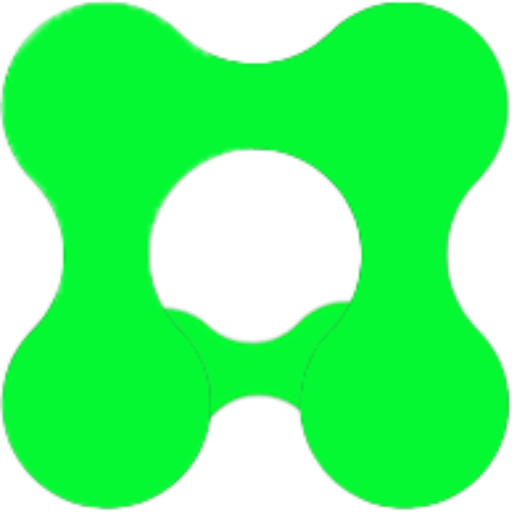Phygital art
Phygital artist, Arsen Eca explains why phygital art could revolutionize digital art.
What is phygital art
Phygital art, a facet of contemporary art, emerged in the early 2000s. However, the term “phygital” was not adopted until 2022, gaining popularity alongside the rise of NFTs.
Phygital artists combine physical materials — such as acrylic paint, bronze or clay — with a digital element, such as a smart contract, an NFT, a digital artwork or a computer program. The resulting work has a physical, palpable dimension as well as a digital dimension, adding a sort of new dimension or vibration to the work.
In the process of creating a phygital work, the artist envisions the work as a unified entity, where the physical and digital aspects are intrinsically linked and not separated. This holistic approach is reflected in the use of the term “phygital material”, a phrase coined by artist Arsen Eca to describe the unique material employed in his creations, which merges tangible and digital elements into a single form of artistic expression. .
For some creators, phygital art is considered a high art form that enriches digital art. They see it as a way to overcome the perceived limits of digital art, often considered too confined, uniform and lacking depth. By integrating a physical dimension, phygital art brings a complexity and texture that dialogue with the digital space, thus creating a richer and multidimensional work.
What is a phygital work?
In the world of phygital art, each creation is designed holistically, inseparably merging physical substance with its digital counterpart. This approach allows the work to acquire a plurality of poetic dimensions, where materiality and the virtual respond to and enrich each other.
Thus, a phygital work is not reduced to a simple transposition from one format to another; it is neither the raw digitization of a physical part, nor the direct materialization of a digital entity. Rather, it represents an integrated artistic entity, where physical and digital components are designed and created to coexist and interact, offering an enriched and expanded aesthetic and conceptual experience.
What is phygital matter?
Phygital material, as conceptualized by Arsen Eca, represents an innovative artistic material. It is a mixture of physical matter with information present in the blockchain. It is a material that must be prepared before being applied.
Arsen Eca’s work is characterized by the application of phygital material in all his works, a bit like Yves Klein and his characteristic blue. Phygital matter is an innovative material that merges the physical and digital world to create a new dimension. It has become the cornerstone of Eca’s work, who uses it to transform and shape his creations according to his imagination
The work “The Running Man” by Arsen Eca is constructed with acrylic paint. In this artistic representation of Man, the artist integrates a heart which beats in the blockchain until a certain date. The link between information and matter is made thanks to an invisible electronic chip, but connected by radio frequency to the blockchain. It’s phygital material.
Information is matter
According to Einstein’s theory of general relativity, information is linked to gravity and can be considered a physical property of the universe.
Quantum information theory, which studies the quantum properties of information, suggests that information is a physical entity that can be stored, transmitted and manipulated in ways similar to matter and energy.
Recent studies have also shown that information can be considered a physical property of matter, because it is stored in the quantum states of particles.
It was from these theories that Arsen Eca conceptualized phygital matter and worked as a pioneer of phygital art to create phygital works.
For the artist, information is previously produced through capture systems specially created for the production of information, thanks to what he calls the “Poetic Clicks” of deviant systems, which serve as a binder for the creation of phygital matter. It is therefore always from information that Arsen Eca creates his works.
A revolution in digital art and NFTs?
Phygital art is an art form that fuses physical art and digital art to create a new form of artistic expression. This fusion allows artists to create works that blur the boundaries between the tangible and the intangible, the real and the virtual, and which provoke reflection on the way in which digital technologies influence our perception of the world, our communication and our identity .
For the artist Arsen Eca, pioneer of phygital art, Man needs to touch the works, to see them without distances, without screens, to fully appreciate their texture, shape and material. Digital is no longer enough to satisfy this human need for physical contact with art. This is why the artist considers phygital art to be a revolution in digital art, as it allows artists to create works that are more immersive, interactive and engaging than traditional digital works.
NFTs (Non-Fungible Tokens) have also revolutionized the art industry by allowing artists to sell their digital works as unique assets and receive fair compensation for their work. However, NFTs cannot replace the physical experience of art. Works of art must be seen, touched and felt to be fully appreciated. By combining phygital art and NFTs, artists can create works that are both physical and digital, allowing them to reap the benefits of both worlds. NFTs allow artists to sell their digital works as unique assets, while phygital art allows artists to create works that are more immersive, interactive and engaging than traditional digital works. For the artist, NFTs will evolve towards phygital.

